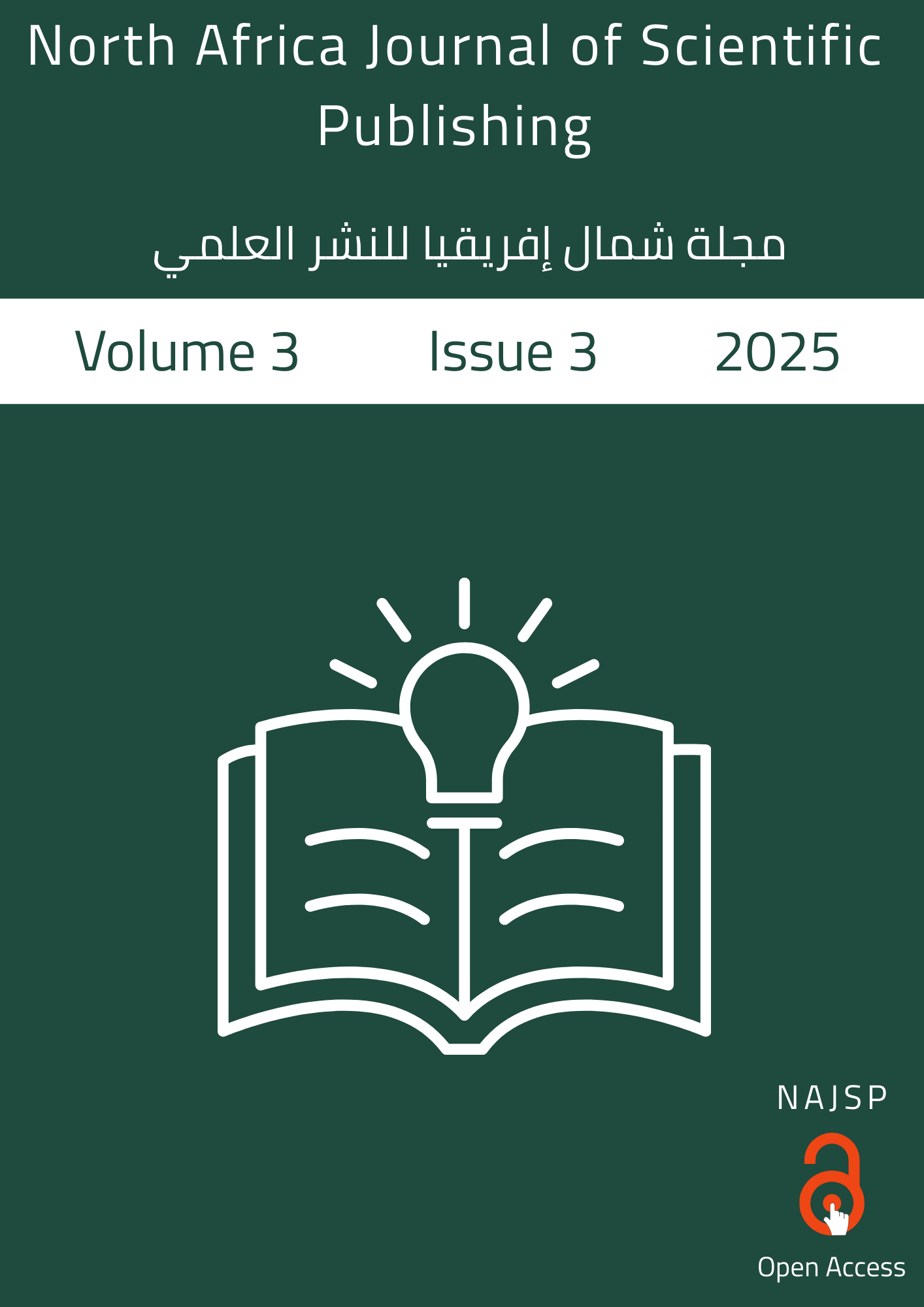Environmental Study to Detect Parasitic Pollution in Irrigation Water, Soil, and Selected Vegetables in the Ghat Region
DOI:
https://doi.org/10.65414/najsp.v3i3.519الكلمات المفتاحية:
Parasitic contamination، Physicochemical properties، Treated soil، Contaminated vegetables Parasitic spreadالملخص
Parasitic pollution of irrigation water, soil, and vegetables is a significant public health and environmental concern. Parasites can transmit to humans through contaminated water or vegetables, causing serious illnesses. This problem is particularly acute in developing countries due to inadequate healthcare and water scarcity. This study aimed to assess the prevalence of parasitic pollution in irrigation water, soil, and locally produced vegetables within the Ghat region, and identify the types of parasites present. Conducted across Greater Ghat (Al-Awinat, Tahala, Ghat, Al-Fayyut, Al-Barakat, Eseen), the research unfolded in three phases: 1. Water Quality: 23 irrigation water samples were analyzed for physicochemical properties (Salinity, TDS, EC, Temperature, pH, DO, BOD) and screened for parasitic contamination.2. Soil Contamination: 46 soil samples were examined for parasitic pollution.3. Vegetable Contamination: 66 samples of leafy greens (lettuce, parsley, Al-Barakat, mint, chard) were collected from the same farms as the water and soil samples and tested. An alarming 91% (60 out of 66) of the vegetable samples tested positive for parasitic contamination. Nearly half (47%) of the contaminated vegetable samples harbored more than three parasite types, indicating statistically significant polyparasitism. 20 different parasite species were identified. Prevalence rates were: 14% in water samples, 44% in soil samples, 42% in vegetable samples. The most prevalent parasites included Ascaris eggs, Amoeba spp., Ascaris lumbricoides, Ascaris worms, Cryptosporidium, and Clonorchis sinensis. The widespread presence of these pathogens highlights a critical public health risk. practices, fostering collaboration between food safety authorities, and strengthening academic-government partnerships to monitor environmental pollution. Supporting epidemiological studies to track parasites across diverse environmental samples is vital for developing effective strategies to reduce disease transmission.








